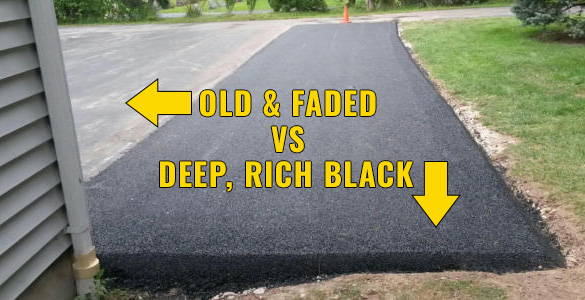Hot Mix Asphalt: A Sustainable Solution for Pavement
Warm Mix Asphalt (HMA) has emerged as a leading sustainable option for pavement remedies, offering a myriad of innovative innovations and environmental benefits. As the need for eco-friendly building methods grows, discovering the subtleties of HMA's sustainability can give useful understandings right into the future of sidewalk solutions.
Environmental Benefits of Warm Mix Asphalt

Moreover, Warm Mix Asphalt helps to minimize city heat island results. Its dark shade absorbs sunlight, reducing the quantity of warmth reflected back into the atmosphere contrasted to lighter-colored pavements. This can reduce ambient temperatures in urban locations, lowering the need for air conditioning and inevitably minimizing power usage.
In addition, Warm Mix Asphalt contributes to enhanced stormwater monitoring. Its permeable nature enables water to infiltrate the pavement and charge groundwater materials, decreasing runoff and the danger of flooding. These ecological advantages make Warm Mix Asphalt a lasting choice for paving roadways and highways.
Energy Efficiency in HMA Manufacturing
Is power performance a crucial factor in the production of Warm Mix Asphalt (HMA)? Power plays a significant role in the manufacturing of HMA, affecting both expense and environmental sustainability. One key aspect of power effectiveness in HMA production is the usage of cozy mix asphalt (WMA) innovations.
Moreover, improvements in plant innovations have actually brought about even more energy-efficient HMA production procedures. Modern plants are developed with functions like recycled asphalt sidewalk (RAP) handling capacities, efficient burner systems, and improved insulation, all contributing to energy savings. By enhancing power use in HMA production, the market can lower its carbon footprint while preserving premium sidewalk products. Power efficiency is, therefore, a critical factor to consider in ensuring the sustainability of Warm Mix Asphalt production.
Recyclability of Warm Mix Asphalt
The recyclability of Warm Mix Asphalt (HMA) is browse this site a crucial facet of its sustainability and long-lasting environmental effect. HMA is one of one of the most recycled products in the USA, with over 100 million loads of redeemed asphalt pavement (RAP) being reused every year in new pavement building. Reusing HMA uses numerous environmental benefits, such as minimizing the requirement for virgin products, decreasing power usage throughout production, and decreasing the amount of waste sent out to landfills.
The procedure of recycling HMA includes crushing the existing pavement, squashing it right into smaller pieces, and mixing it with brand-new aggregate and asphalt binder to create a recycled mix. In general, the recyclability of HMA plays a substantial function in promoting sustainable methods within the sidewalk industry.

Long-Term Efficiency of HMA
Asphalt sidewalks show durability and durability over an extended period, showing the lasting efficiency of Hot Mix Asphalt (HMA) Furthermore, innovations in HMA innovation, such as the usage of polymer-modified binders and warm mix asphalt, have actually further improved the sturdiness advice and durability this contact form of HMA sidewalks. By focusing on high quality building and construction and maintenance techniques, HMA continues to prove itself as a economical and sustainable service for resilient pavement infrastructure.

HMA: Longevity and Sustainability
Showing both resilience and sustainability, Hot Mix Asphalt (HMA) has ended up being a keystone in the building of lasting pavement facilities - angled parking. HMA's toughness comes from its capability to withstand heavy loads, harsh climate condition, and high traffic quantities, making it a reliable selection for roads, freeways, and airport paths. The composition of HMA, which normally includes aggregates, binder, and filler, plays a crucial function in enhancing its durability and resistance to tear and wear
In addition, HMA's sustainability exists in its recyclability and energy-efficient production procedure. The ability to recycle reclaimed asphalt pavement (RAP) in new HMA blends lowers the need for virgin products and minimizes the environmental effect of sidewalk building and construction and upkeep. In addition, the power efficiency of generating HMA hinges on its lower mixing temperature levels contrasted to other pavement materials, resulting in lowered power intake and greenhouse gas exhausts.
Verdict
In conclusion, warm mix asphalt (HMA) offers a sustainable option for pavement with its ecologically pleasant features. HMA's recyclability, energy efficiency in production, and lasting resilience make it a green option for road building and construction.
HMA is one of the most recycled materials in the United States, with over 100 million loads of recovered asphalt sidewalk (RAP) being reused every year in new pavement construction.The procedure of recycling HMA involves milling the existing pavement, crushing it right into smaller sized pieces, and mixing it with new aggregate and asphalt binder to create a recycled mix.Asphalt pavements show durability and resilience over a prolonged period, mirroring the long-term performance of Hot Mix Asphalt (HMA) In addition, improvements in HMA technology, such as the usage of polymer-modified binders and warm mix asphalt, have actually additionally improved the resilience and longevity of HMA pavements. The ability to reuse recovered asphalt pavement (RAP) in brand-new HMA combinations reduces the need for virgin materials and decreases the ecological impact of pavement construction and upkeep.